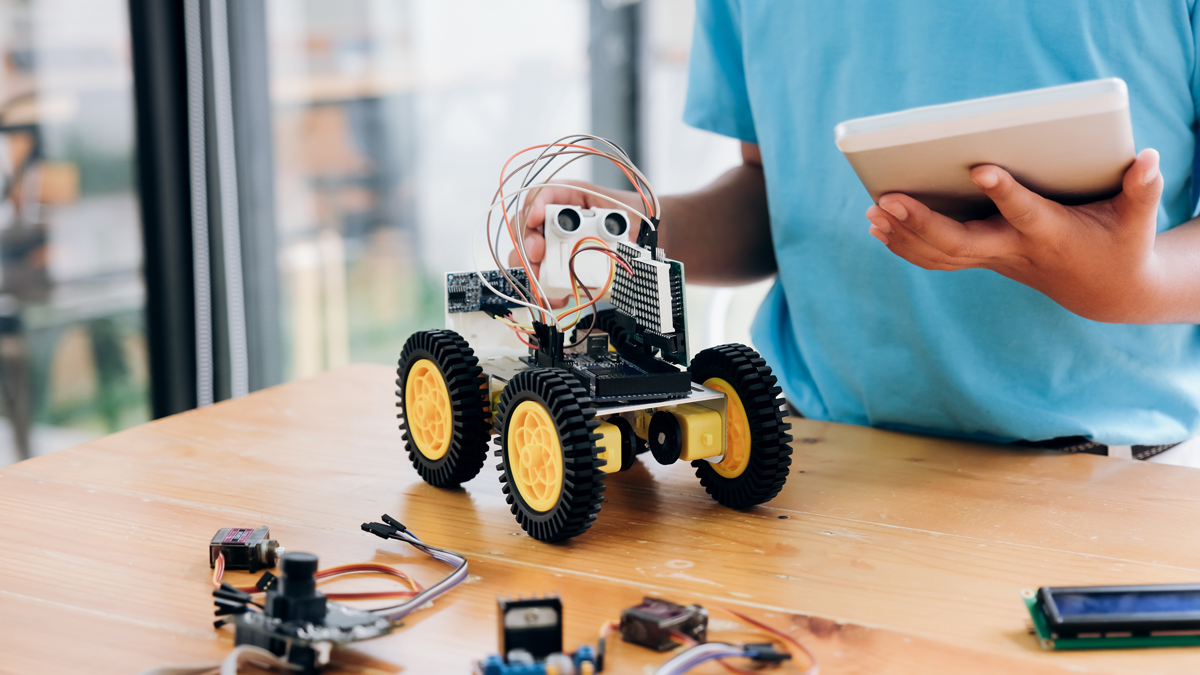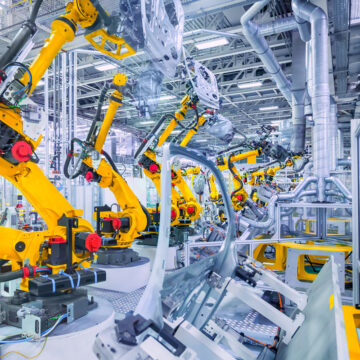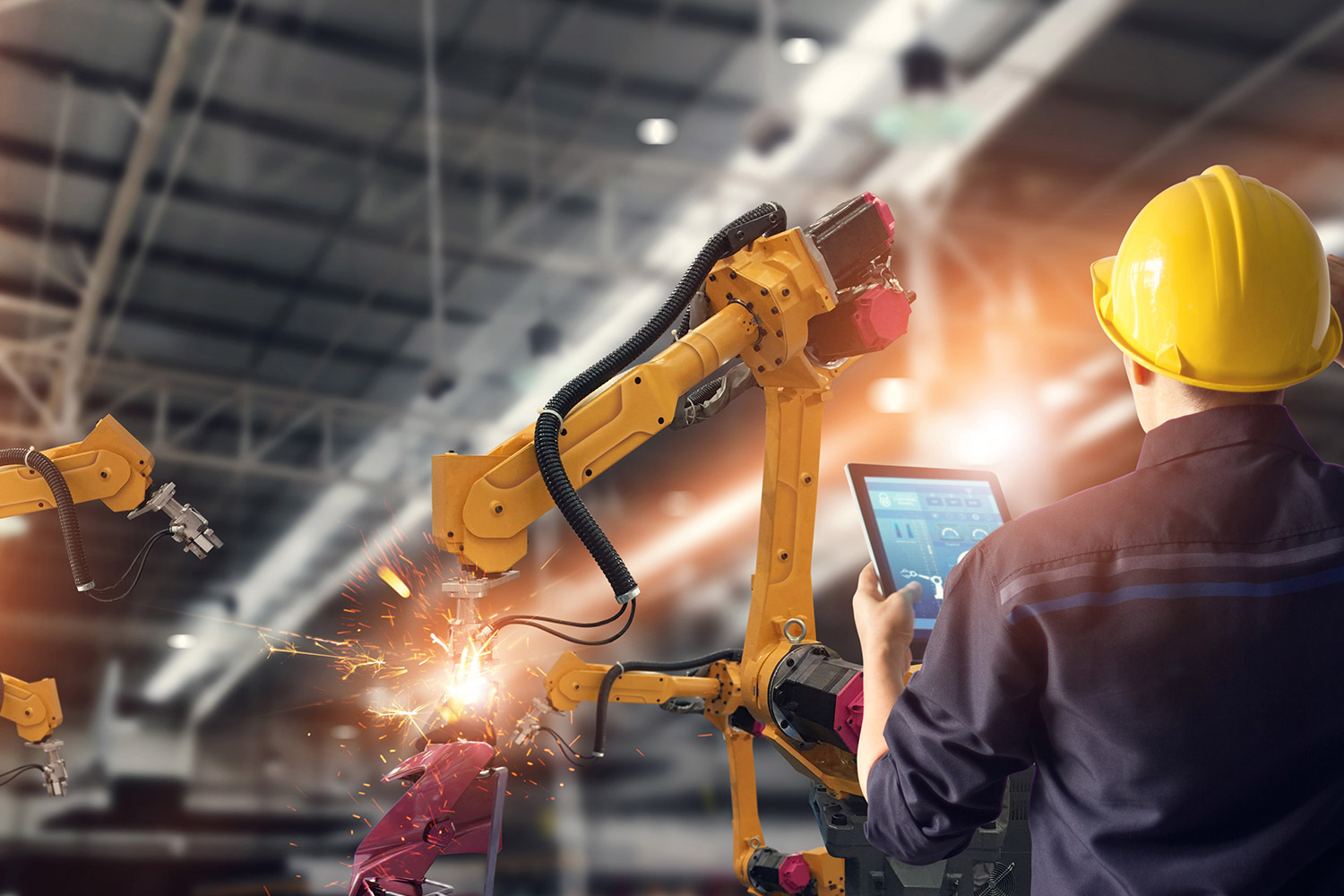Machine Connectivity – Requirements & Added Value

Machine connectivity made easy
A robust database is the basis for any optimization measure in manufacturing. When collecting this data, you must always start where your value is added: on the shop floor!
In this article, we demonstrate the many potential benefits of a clean machine connectivity and the first steps on the way to a networked machine park.
What machine connectivity means to us as an MES solution provider and what added value you can generate for your company?
Machine connectivity is – as so many in the software area – a very elastic term. For one person, machine connectivity means a simple, unidirectional communication which provides the MES system with signals such as “machine is switched on” or “machine is running”. Conversely, bidirectional communication means that there is an intervention into the production flow, e.g. by means of locks, the delivery of IDs or the transmission of target values. It is all the more important that solution providers to respond to the individual needs of their customers and all involved gain a clear understanding of the expectations toward the machine data.
Implementing a smart factory requires unrestricted connectivity of all production-related machines and systems. Connecting the programmable logic controls to the MES system enables access to the raw data of the controls which may be saved in so-called data blocks. Therefore, data collection occurs directly where value is added, on the shop floor.
Translating the data into a standardized format for communication with subsystems also enables the provision of additional systems, e.g. cloud applications, controls or company-specific programs across the entire value-added chain.
What added value can you generate through machine connectivity?
Top of the list is transparency which constitutes a central success factor in manufacturing. This relates to comprehensive information to system run times, disruptions, downtimes, good and reject volumes (data relating to system quality), on the one hand, but also saving process data relating to the order. This enables conclusions about product errors vis-à-vis customers (e.g. due to incorrect target or actual parameters).
In addition, there is the possibility of saving process data (i.e. mass data) cyclically or initiated by a trigger in time series databases. The chronological sequence of value changes can be displayed visually over prolonged periods (i.e. several years) and also assist in a detailed error search in case of customer complaints.
The comprehensive data collection enables compliance with legal requirements, such as the requirement of saving lifetime data relating to the product, which is mandatory in some industrial areas.
Machine connectivity allows you to create an intelligent, networked, automated and digitalized production – system-specific island solutions are therefore a thing of the past. Systems can no longer only communicate with the MES system but the collected data can be made available across the entire value-added chain by means of the so-called Data Integration Layer.
What does this require?
In order to be able to realize a machine connectivity, the systems must first be connected to a network. Newer controls already have a corresponding ethernet interface which requires only wiring and the assignment of IP-addresses. For older controls, where retrofitting this interface is not possible or economically unviable, there is an option to retrofit a small control system or a communication module which evaluates defined electric signals or sensors and makes these available in the network.
Once all systems have been connected to the network, the next question is the correct communication protocol. Most modern controls are equipped with one of the most important communication protocols, the Open Platform Communication, OPC UA in short, which enables the manufacturer-independent connection of almost any type of machine and system. OPC UA not only transports but also semantically describes the machine data.
In addition, there are various collection options such as field bus, SCADA, SQL, etc. available for the machine connectivity which deliver the highest data quality for downstream evaluations and analyses.
First, however, it must be established what is to be achieved by the machine connectivity: Is the objective a unidirectional data exchange so that order-related process values can be saved, for example? Or is the aim a bidirectional communication for the data exchange with the control to deliver IDs or to transmit target values, for example? In the case of standardized machines (often processing machines with CNC controls), there are usually fully documented or standardized data block descriptions. In the case of special systems which are individually programmed, either a well documented SPS program or an SPS programmer familiar with the system is required. Here, it is recommended to create a communication data block in which the required parameters for the data exchange are available.
Which steps are required for a successful machine connectivity?
1. System types in the machine park:
Firstly, you should get a clear picture of what types of systems your machine park consists of and what communication interfaces they are equipped with.
2. Defining the quantity summary:
Do you only want to read data from the systems and provide reading access to them to the MES system, or do you want to create a bidirectional communication, control process sequences and make these data available to subsystems in standardized form? Of course, this also depends on which signals your systems can supply.
3. Selecting the connection tool suitable for your application:
As an experienced solution provider, we can draw on a broad know-how of different controls, field bus systems, etc. and make the right decision together with the user in order to implement complex requirements. We are happy to advise you individually about the various options and the pros and cons of the various solutions.
4. Creating the signal list:
The signal list is where all parameters of the signals to be picked up (e.g. machine and control type, communication type, communication direction from the view of the MDE, signal category, etc.) are defined in order to ultimately enable the implementation of the machine connectivity.
5. Implementing the signal generation & interpretation:
Now, you have all the data available to implement the machine connectivity.
Conclusion
Machine connectivity is not rocket science and enables you to achieve fast, verifiable results, provided you
- have a clear idea what insights you want to gain from the acquired data
- familiarize yourself with your systems in order to ascertain their communication interfaces and data availability
- have a suitable tool to read the data and process them for downstream evaluations.
Industrie Informatik is on hand to advise you in the process and to support you in implementing it.





